The garden path can become not only the necessary element of the site, but also by decoration. You can make a path in the garden from different materials, for example, from concrete, and very convenient when there is a special form for filling the cement-sand mixture. In this article, we will tell how to make a shape for a garden path with our own hands and how to create a beautiful path in your garden.
Why do you need garden tracks on the plot
Those gardeners who pay due attention to the decorative design of their sites will definitely take care of creating interesting and neat tracks. The paths, harmoniously inscribed in the overall landscape design, perfectly emphasize the stylistic orientation of the garden, give it some elegance and well-groomed. That is why the main function is aesthetic. A plot that looks neat and representative, testifies to the pureliness of its owners.
The second function of garden tracks is practical. The paths laid through lawns connect together all the buildings on the household plot and create a single architectural ensemble of them. They also divide the lawn into separate areas, outline the borders of the flower and flower compositions. Among other things, the tracks highlight the stylistic design of the garden, focus on it.
Advantages and disadvantages for garden tracks
The garden trail can be performed from any submitted means: wood, wild or treated stone, bricks, various artificial materials. The relatively cheap, but quite practical and attractive option is the filler paths from concrete. Forms for them can be purchased in the construction market or make independently. In any case, it does not prevent any gardener in your farm.
Matrices for the manufacture of concrete elements possess many advantages, we will understand them in more detail:
- The shape for the fill of garden tracks allows you to quickly and without extra costs to make a path with a beautiful and neat pattern.
- Concrete trails made in a similar way, look much better than the usual cement-sand tie. In his own way, they resemble a path paved by stones. After pouring, the material can be additionally covered with a layer of special paint, which will give it even greater decorativeness.
- The durability of forms is another of their advantages. These designs can be used many times, and as unnecessary just to store in a suitable place. It is worth noting that the purchased forms are most often made of plastic, which is not afraid of moisture, cold, heat, frost, is not corrosion. Such structures are quite durable, in the process of work on them you can safely affect the rubber hammer, without fearing to damage.
- Another advantage of the forms is their cheapness. You can make the design itself from the girlfriend, hoping without significant cash spending. The finished product will cost a little more expensive. For example, a standard form for a garden lane size of 600x600x60 cm, made of plastic, will cost you about 700 rubles.
- The strength of the tracks made using such forms is no doubt. Concrete can be poured to any depth, for example, by 20 cm, the upper part of it is performed in the form of cells, and then you can not just walk along the path, but also ride a car.
- Create a garden track using a tile form can almost anyone. These designs are simple in circulation, they do not require special skills and physical strength. The whole process will not take much time and will be completed faster than in case of laying paving slabs, brick or stone.
As you can see, the forms and tracks themselves made with their help have many positive parties. But before deciding to buy materials for the manufacture of concrete paths, it is advisable to familiarize yourself with their disadvantages:
- In appearance, the garden tracks from the concrete are much inferior to other decorative materials: tiles, brick, wood, natural stone. Even if you try to give concrete a view of any of these materials, it is hardly possible to achieve complete similarities.
- Spraying, which covers the cement-sand composition after it is frozen, is prone to abrasion and short-lived. The path will look beautiful not so long, but to keep it in a careful form, the paint will have to update at least 1 time per year. Some solve this problem using special pigments that are added to the liquid solution and paint the entire thickness of the concrete. It should be noted that the cost of such substances is quite high, and the final result is not so attractive.
- When filling significantly areas, the process will move slowly, since the drying of the concrete will require a certain time. You can solve this problem by purchasing or making several forms for tracks. In this case, the work will be performed faster, but additional forms will entail and excess costs.
- Walking along a concrete path can be only 20 days after its fill - so much time will need for sufficient solidification of the mixture. You can ride the machine on such a tile no earlier than 30-40 days.
Production of shape for garden tracks with their own hands
Many prefer not to spend an extra time and buy a finished shape for the track in the construction market or in a specialized store. This option is really easier in terms of saving time, besides, factory forms have geometrically accurate dimensions. But the items made with their own hands will cost you much cheaper. The track, filled into a similar shape, it is unlikely to be perfectly even, but its individuality will be concluded, originality, originality. The form made by your own hands can be completely anyone, while the factory products are manufactured by the same templates.
Make a shape for a garden path in different ways. Consider two uncomplicated methods of manufacturing such a design.
Wooden bars
To create such a matrix for concrete tiles, it is necessary to turn the 5x5 cm with wooden bars with a size of 5x5 cm. Four such boards are bonded in the form of a square or a rectangle. Details are connected using special grooves that are drunk on the end sides of the bars. Instead of grooves, the design can be fixed with steel brackets, attaching them to wood with screws.
The bottom of the form is performed from the iron sheet or a piece of plywood. If the lane form has large dimensions, when pouring the concrete it is desirable to reinforce the metal grid. Concrete tiles are sometimes decorated with various elements: pieces of ceramics, shallow pebbles, rubble, glass, etc. To do this, before the fill of the cement-sand mixture, a decorative material is laid on the bottom of the form, after which the concrete matrix is \u200b\u200bfilled. It can be done a little different: glue a pebble or pebbles on a sheet of paper with water-soluble glue, then put the paper on the bottom of the mold and fill the design with a solution. After the frozen, the product is removed from the matrix, the paper is well wetted with water and removed. Finished tile on top of the railway.
Metal shape for a garden lane
The shape for pouring concrete can be made of old hoops for barrels. If you have such hoops in the farm, clean them carefully from rust and dirt, process the anti-corrosion tool and dry. Then give the hoop to any form you need. If you have a slightly hoop, bring them differently and the details of the path in the garden will have a kind of natural stone. Placeing the hoops on the prepared base, the concrete mixture is poured into them, give a solution to dry, after which the metal part is removed.
If there is no hoop at hand, the metal shape can be made of a galvanized iron strip of about 5 cm wide.
Creating a garden path with a form
- Deciding with a place in the garden, where the path will be held, the first thing is preparing the basis. If the basis is fulfilled in all the rules, the track will last long years and will not be deformed and collapse.
- To create a peculiar foundation for a path, all over its perimeter first dig a trench, removing about 10 cm of soil.
- The resulting ditch is falling asleep by rubble, making a layer with a thickness of up to 3 cm. Then rubble as it should be trambed and covered with a layer of gravel and sand.
- On the prepared base, it is possible to lay the elements of the path. If the tile was made in advance, it is installed on a sandy pillow, tightly mixing the elements among themselves, and then tram a rubber hammer.
- Milk the path, it is compacted. To do this, pour sand on the path so that it filled all the slots and the lumeges between the tiles.
If the tile was not cast in advance, and the track will be filled with fresh concrete, the base of rubble, gravel and sand do not need to do in advance. The second way to create a garden path Consider stages:
- For a start in the place where the path will pass, remove the soil layer with a thickness of approximately 5 cm. In the prepared base, the shape is installed and slightly plunge it with a rubber image. You can do otherwise: deepen the shape to the desired level, and then remove the soil layer from its internal space, equal to about 5 cm. These figures are approximate, as the concrete can be poured into a large, and smaller depth.
- The ground inside the matrix and walls of the shape are wetted with water, and then pour on the bottom of a small layer of rubble. After that, the cement-sand mixture is poured into the matrix.
- The pouring solution into the form for creating a garden path is prepared from sand and cement, the ratio of components - 4: 1. Sometimes rubble add to the mass, so that the concrete was more durable and solid. By consistency, the mixture should not be too liquid.
- Forming a tile from concrete, she is given a slightly convex form, so that the water is not stood on the path, but stood from it.
- The surface of the paths are equal with the help of a trowel, and then sheer with a solution of cement and mineral dye. After a few minutes, when the solution clings, the form is removed and proceed to the manufacture of the next part.
- In the solar and hot weather, the tile is covered with a film and periodically wet, so that the material does not crack in the drying process.
The finished and accurate look of the garden path will give a border, which can be made of a variety of materials. For example, a plastic curb will become an inexpensive, but practical option for your garden. Such a border along the path is almost imperceptible, it combines well with different styles and types of coatings, prevents the growth of lawn grass.
Wooden curb looks good on areas in a rustic style, and you can make it from any suitable wood, including from the waste of boards. Please note that the tree is very much spoiled from moisture, so it is desirable to handle with antiseptics and protect with paint or varnish.
The concrete border is perfectly combined with the paths from rubble, pebbles or the same concrete. You can also arrange the borders of the track and wild stone. You can use other materials, the main thing is that the fruits of your fantasy in the end please you.
Useful advice
- In the garden of almost any style, stepper trails will look very cute and elegantly. Separate elements of such tracks are placed on some removal from each other, resulting in a kind of chain. Tiles can also be placed in a checker order.
- When creating garden tracks, you can combine various textures and materials, sometimes even the most courageous and unpredictable combinations look not only original, but also it is quite appropriate.
- Making a footpath in the garden is better in dry and warm weather, especially if we are talking about the fill of concrete. In rainy weather, it is not worth making a walkway, because if the moisture falls into the prepared trench, the path will not serve you for a long time.
Forms for garden tracks, photo:

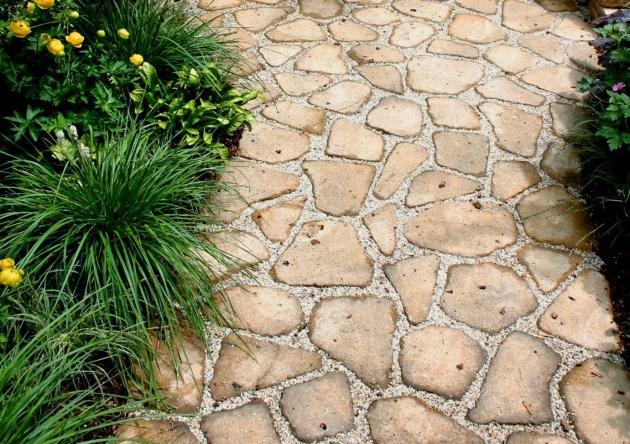
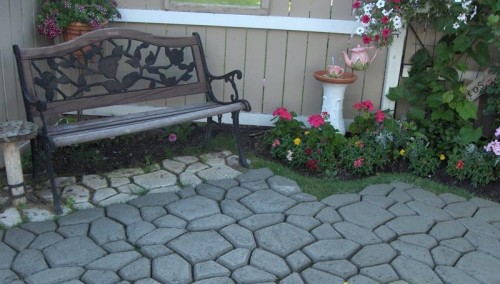

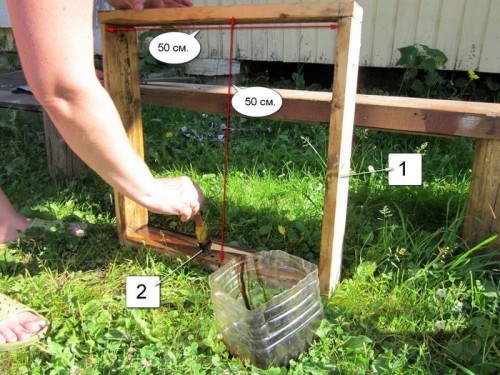
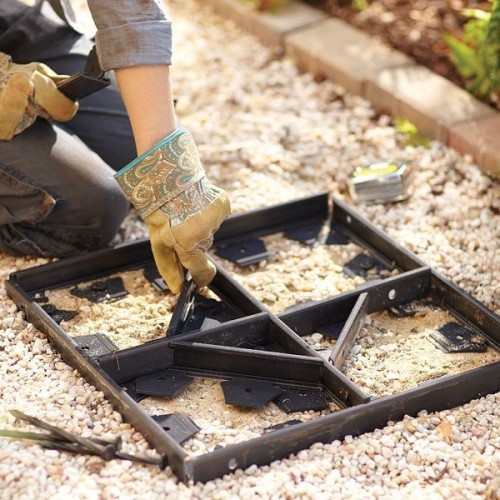
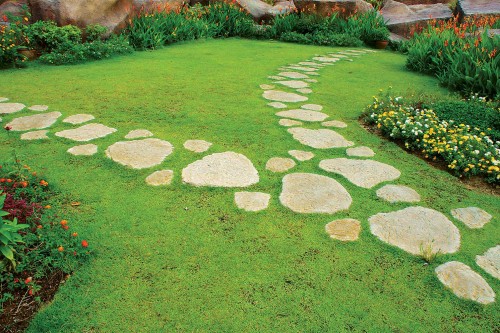
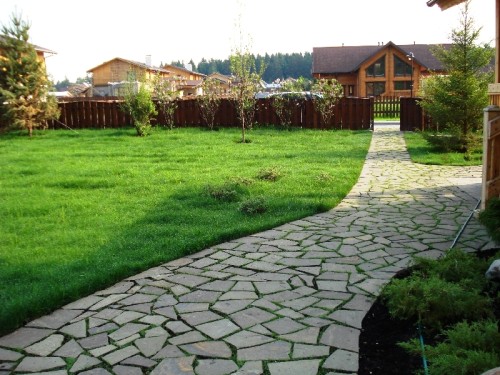
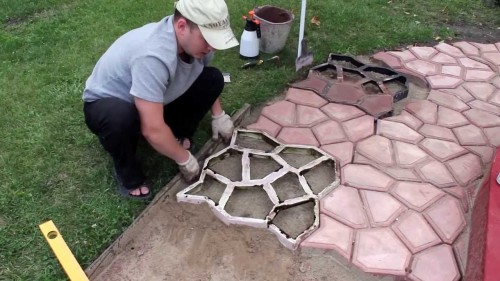
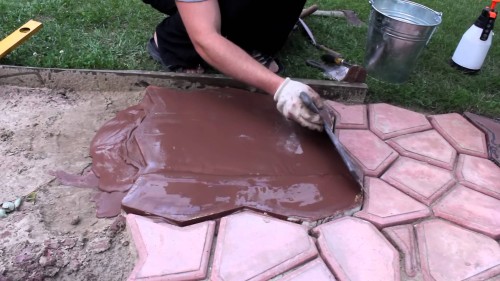
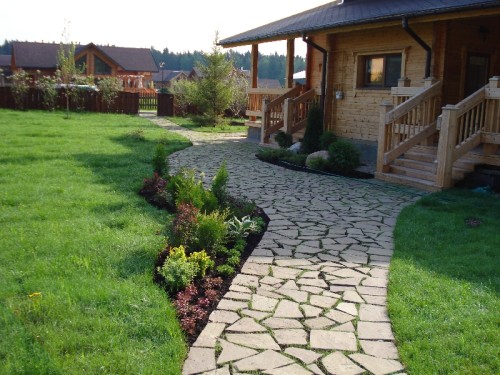
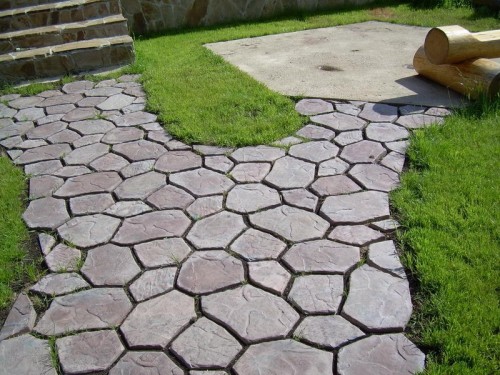
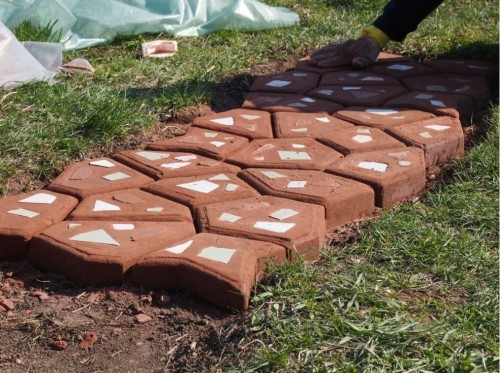













 Start a discussion ...
Start a discussion ...